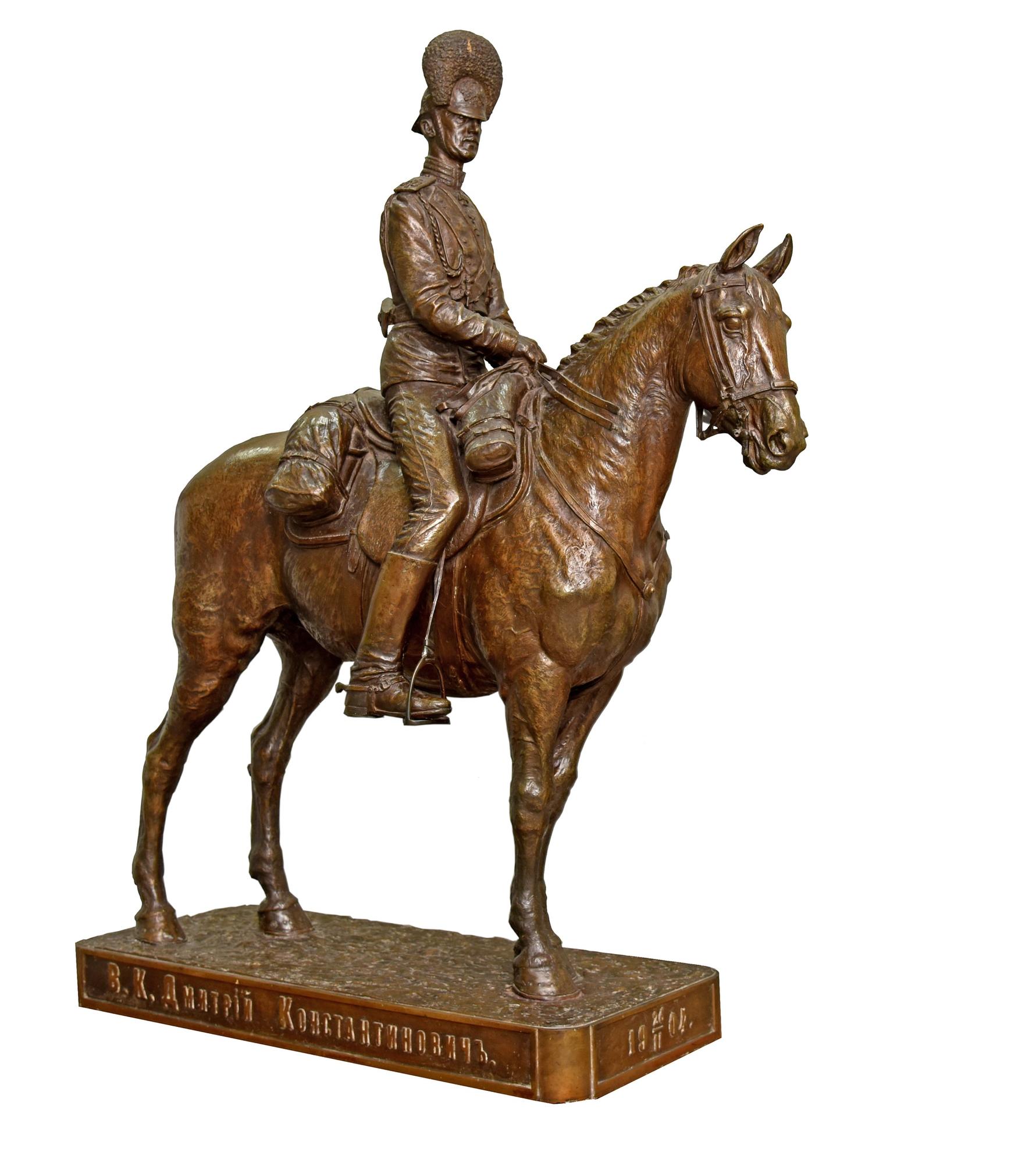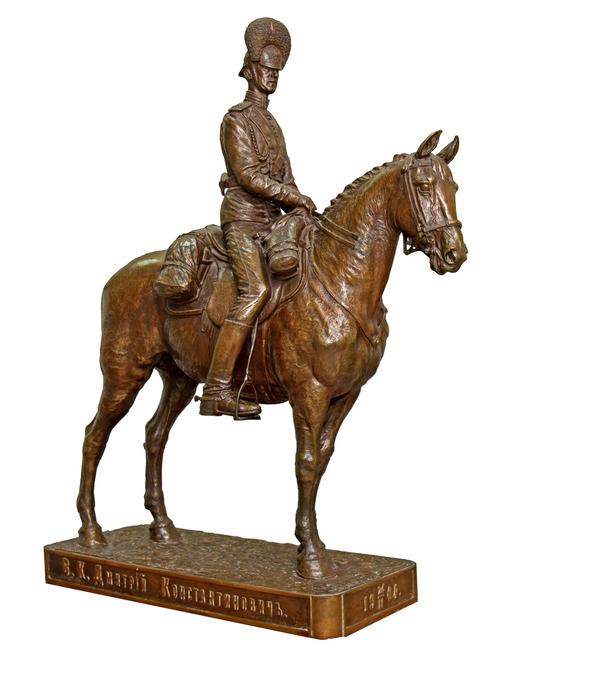Tradition to depict the emperors and military leaders mounted on horseback started in Ancient Rome. The equestrian statue of Marcus Aurelius was one of the first works in this genre. The equestrian statue belongs to the ceremonial, formal type of depiction. Such sculptures were supposed to underline the status and power of the model and were placed at the main squares or memorial sites. For the sculptor such portraits were especially complicated to make. An equestrian statue anticipates an uneven load distribution in the sculpture: the big area in the upper part and a few contact points with the ground in the lower part. Creating the equestrian portrait where the horse only rested on the ground with its two legs was regarded as the pinnacle of craftsmanship.
In the course of time equestrian portraits started to change and, keeping the general ceremonial function, express more emotional experiences and affections, overcoming the artificialities both in the person’s and the animal’s image transferring. The featured statue was made by Artemy (Arthur) Auber, the Russian sculptor of French origin. Auber took his training course at the Imperial Academy of Arts and after it in Paris in the workshop of animalist sculptor Antoine-Louis Barye. It was his training at Barye’s workshop that made aminalism the main genre in Auber’s art.
Artemy Auber managed to assert himself as an authentic artist with his own individual approach to the animal’s depiction. Until then the sculptors, except for Eugene Lanceray, created some sort of portraits of the “posing” animals. Auber, on the contrary, was trying to show them in the real situations (in pursuit, during the battle, eating up the trophy).
The bronze equestrian statue of Grand Duke Dmitry Konstantinovich of Russia was commissioned to Auber by the czar’s family in 1904. Dmitry Konstantinovich was a grandson of the Emperor Nicolas I, he was a commander of Imperial Guard’s Grenadier regiment. The Grand Duke had affection for horses during his whole life. He had his own Dubrovsky horse ranch near Poltava, and was a chairman of horse exhibitions. It is not unusual therefore that he was shown mounted on a horse. Dmitry Konstantinovich is dressed in a ceremonial military jacket and proudly bestrides a statuary horse. The image of a horse it not less remarkable: each of its muscles is carefully struck, its beauty and breed are distinctive. Auber makes an animal look relaxed, taking away all the formality and moving it closer to realism as high as possible.
In the course of time equestrian portraits started to change and, keeping the general ceremonial function, express more emotional experiences and affections, overcoming the artificialities both in the person’s and the animal’s image transferring. The featured statue was made by Artemy (Arthur) Auber, the Russian sculptor of French origin. Auber took his training course at the Imperial Academy of Arts and after it in Paris in the workshop of animalist sculptor Antoine-Louis Barye. It was his training at Barye’s workshop that made aminalism the main genre in Auber’s art.
Artemy Auber managed to assert himself as an authentic artist with his own individual approach to the animal’s depiction. Until then the sculptors, except for Eugene Lanceray, created some sort of portraits of the “posing” animals. Auber, on the contrary, was trying to show them in the real situations (in pursuit, during the battle, eating up the trophy).
The bronze equestrian statue of Grand Duke Dmitry Konstantinovich of Russia was commissioned to Auber by the czar’s family in 1904. Dmitry Konstantinovich was a grandson of the Emperor Nicolas I, he was a commander of Imperial Guard’s Grenadier regiment. The Grand Duke had affection for horses during his whole life. He had his own Dubrovsky horse ranch near Poltava, and was a chairman of horse exhibitions. It is not unusual therefore that he was shown mounted on a horse. Dmitry Konstantinovich is dressed in a ceremonial military jacket and proudly bestrides a statuary horse. The image of a horse it not less remarkable: each of its muscles is carefully struck, its beauty and breed are distinctive. Auber makes an animal look relaxed, taking away all the formality and moving it closer to realism as high as possible.



